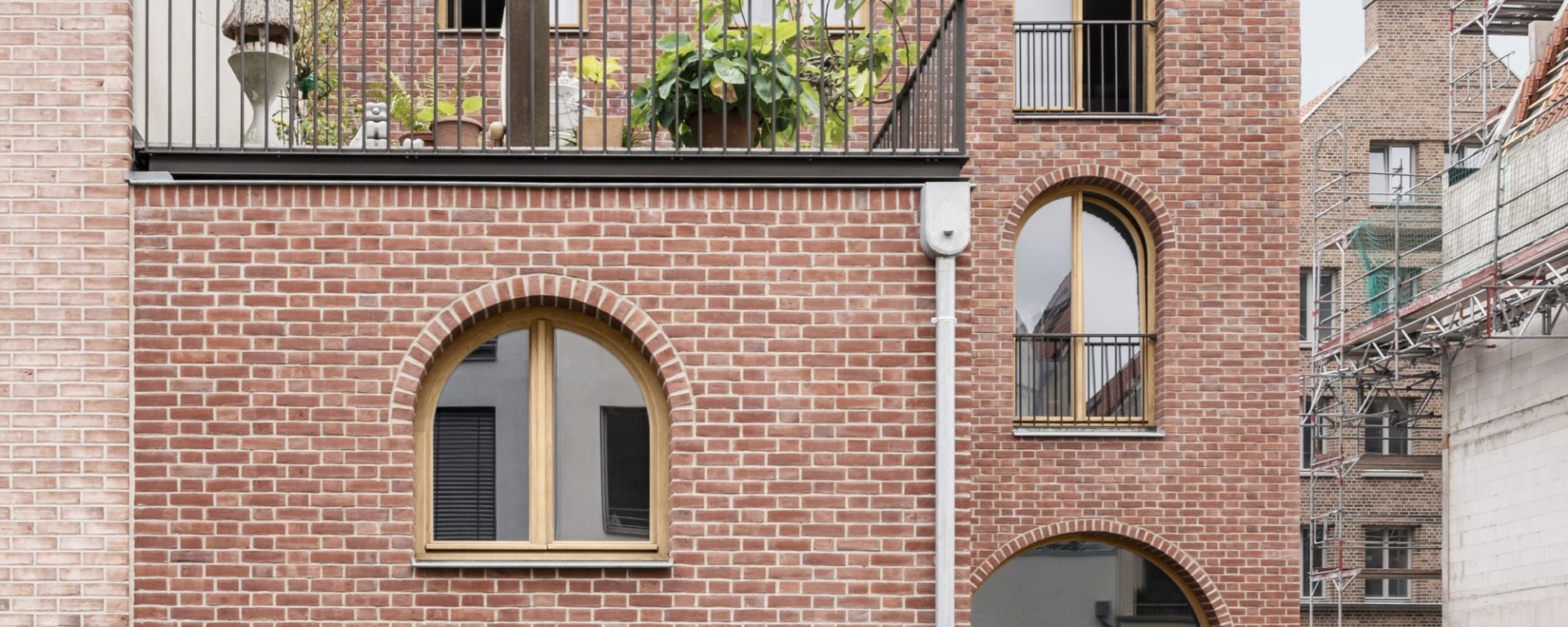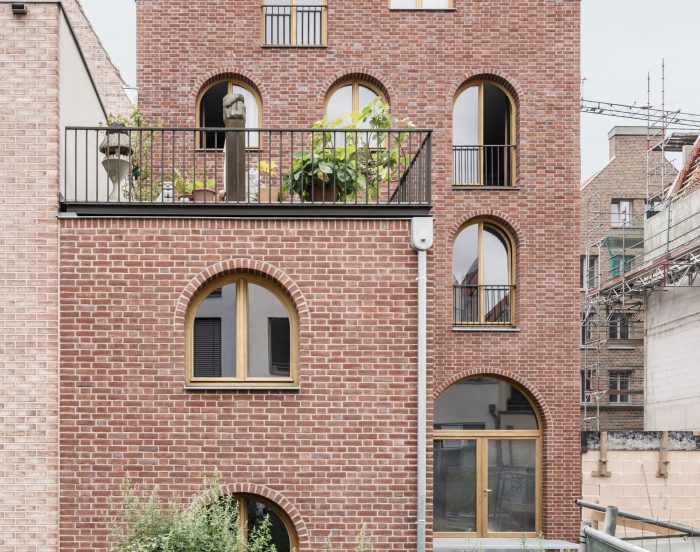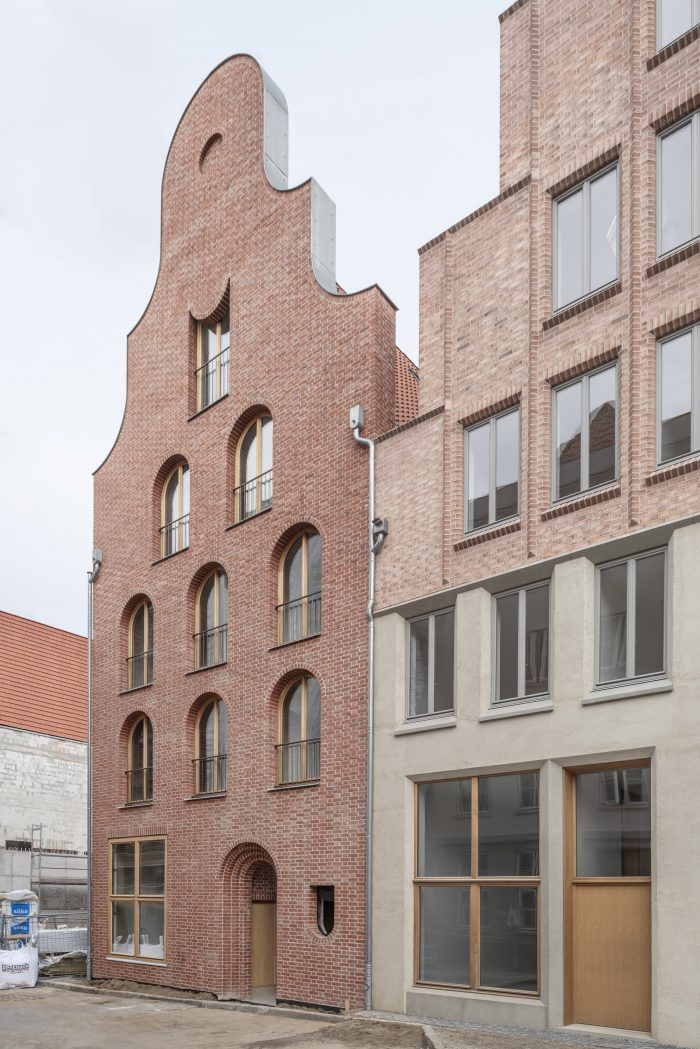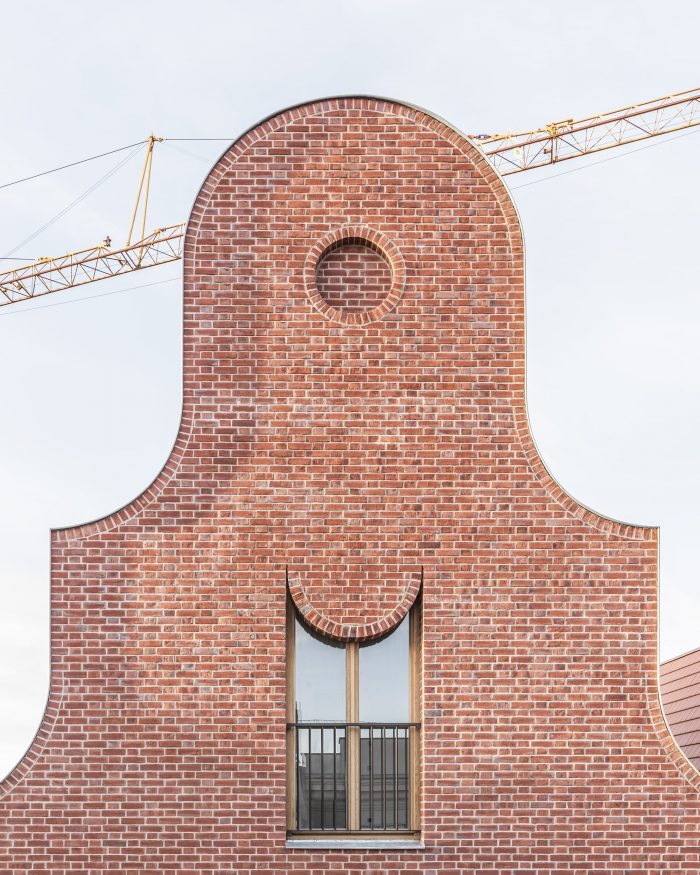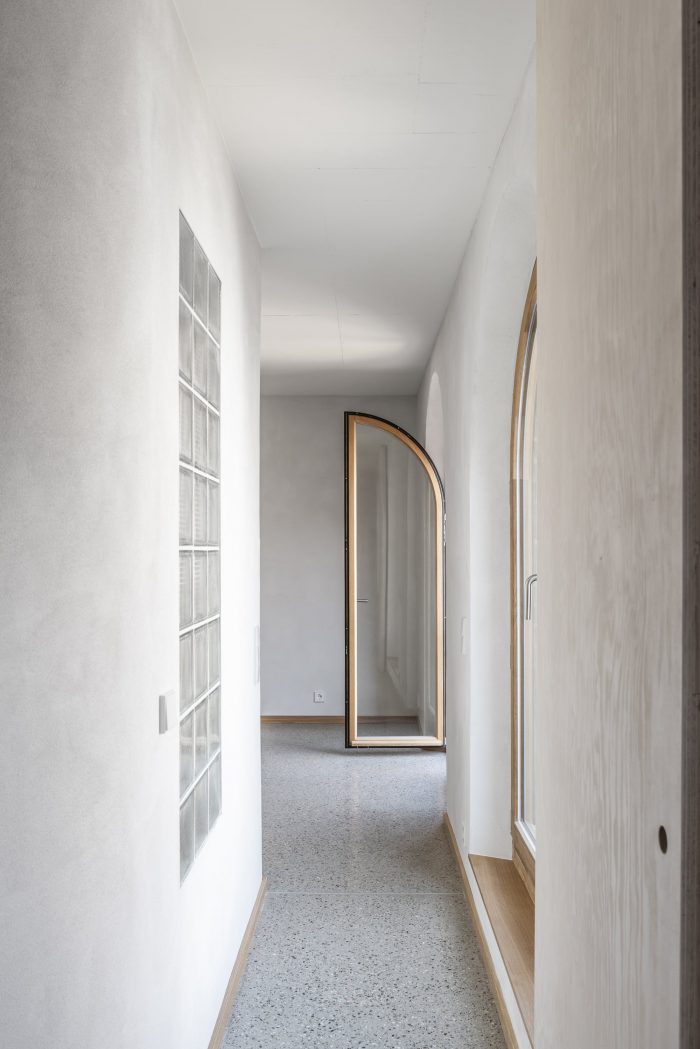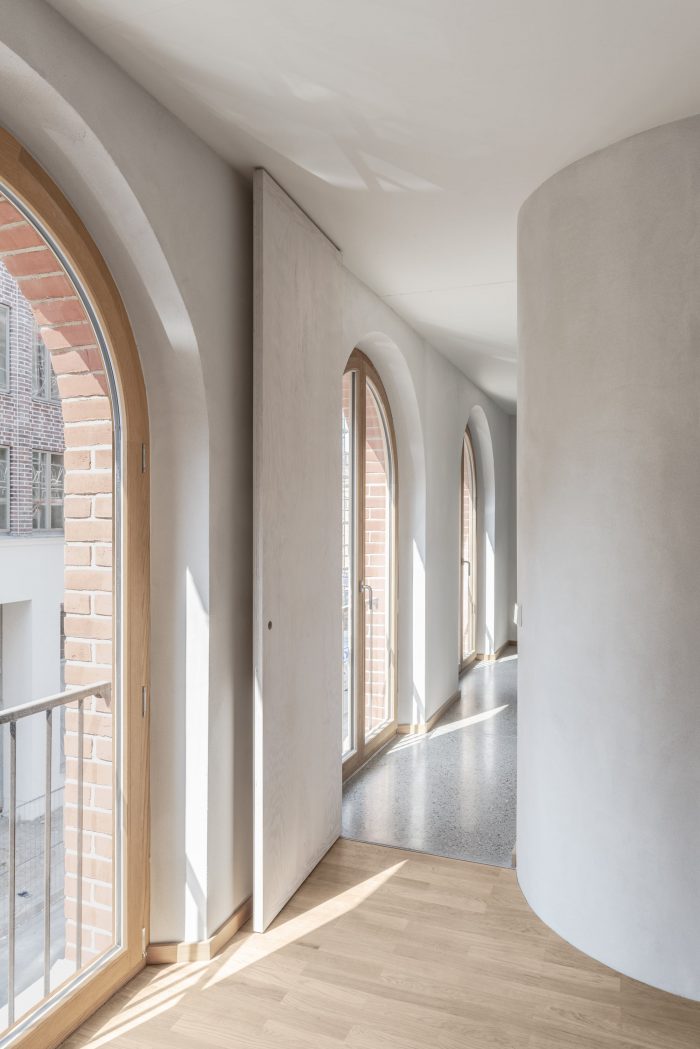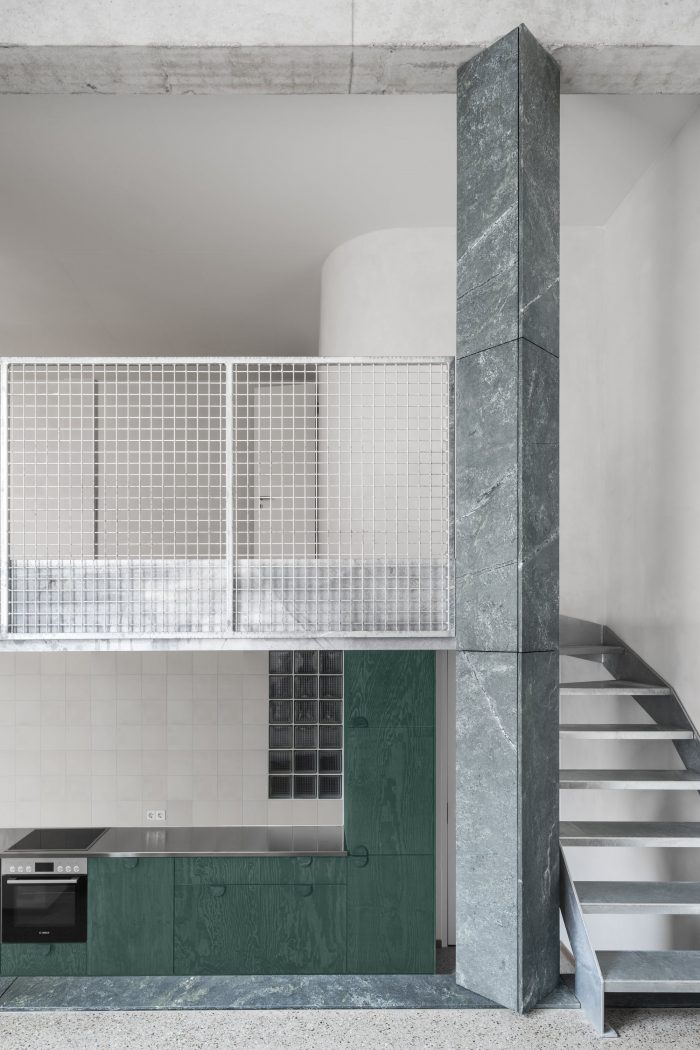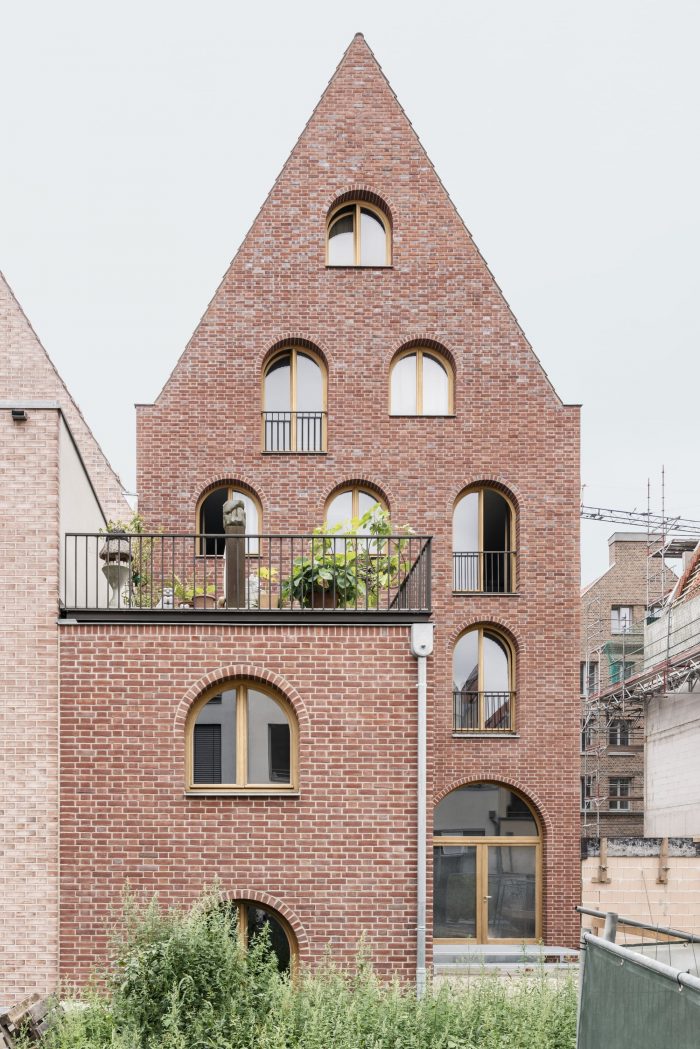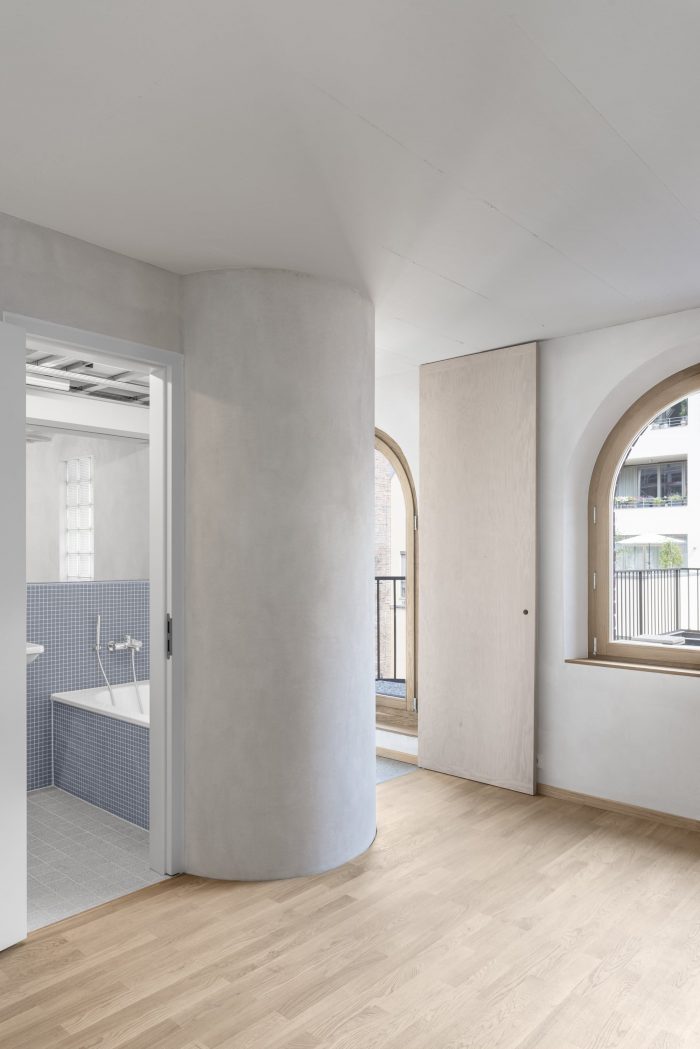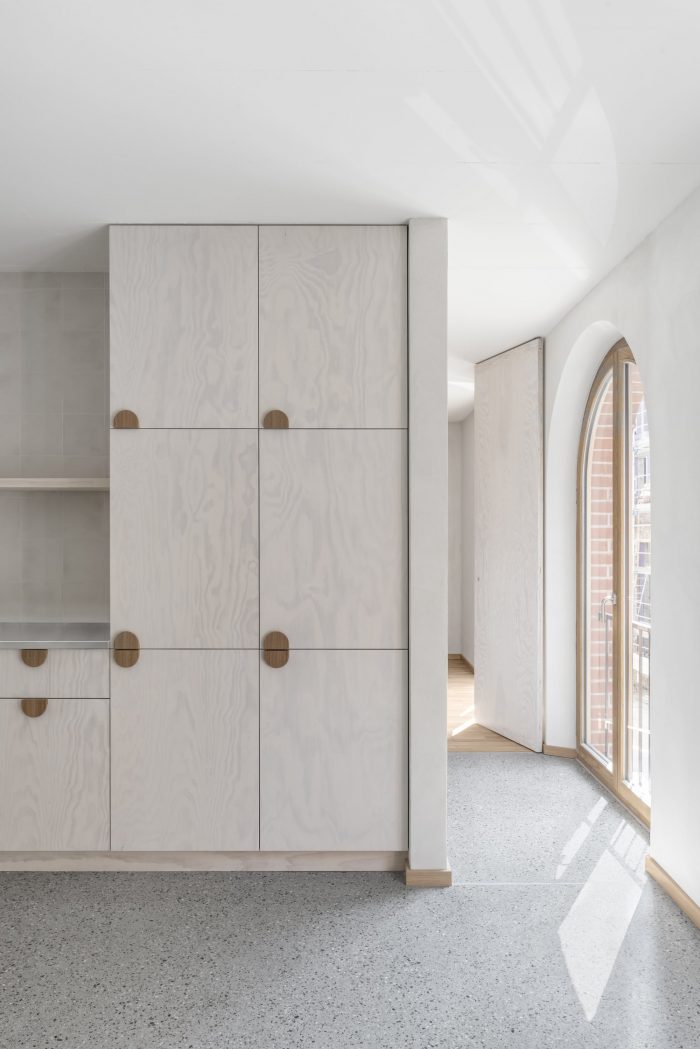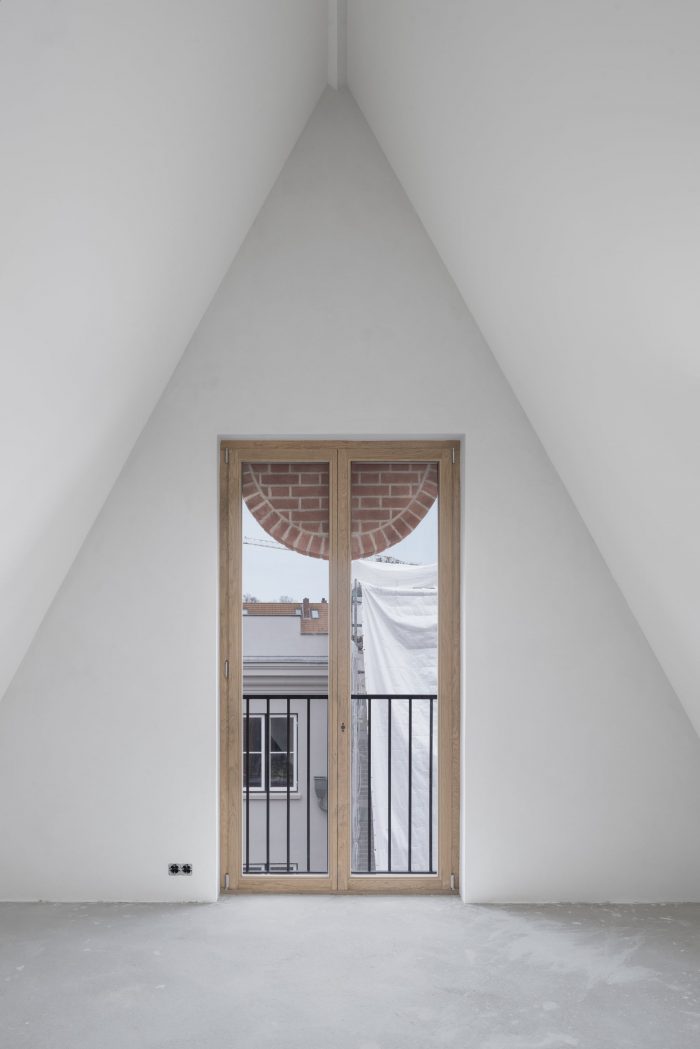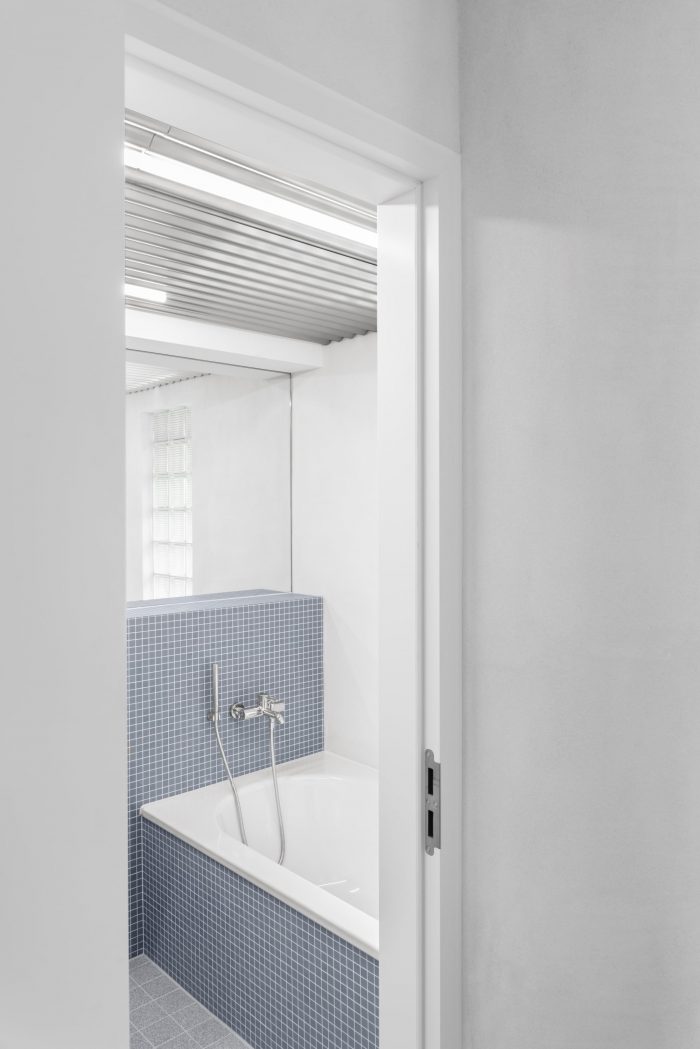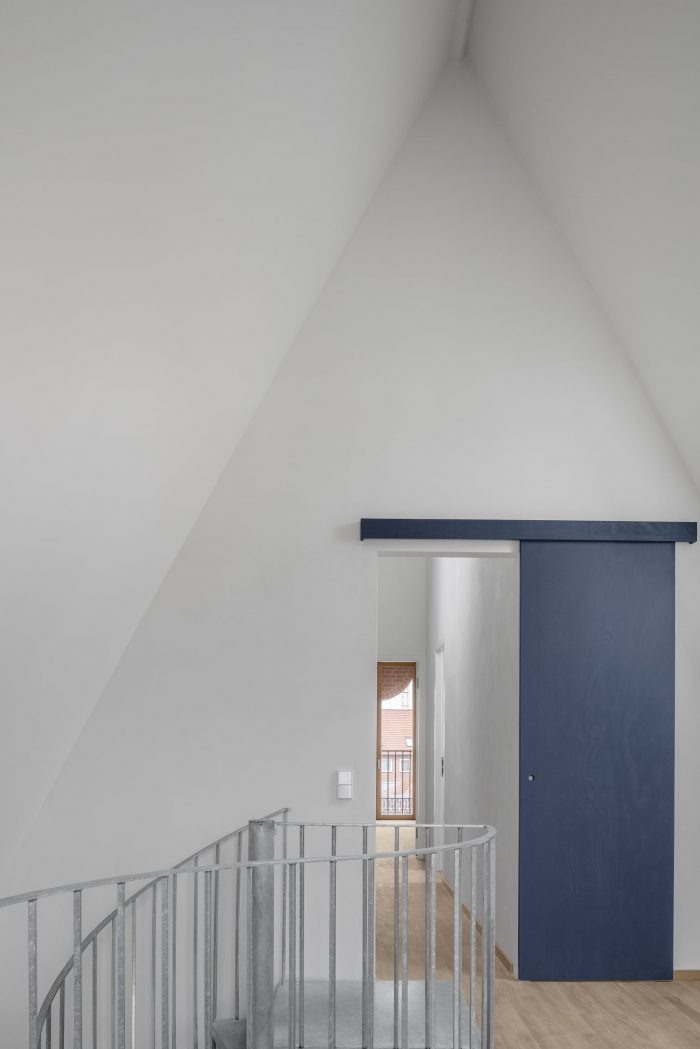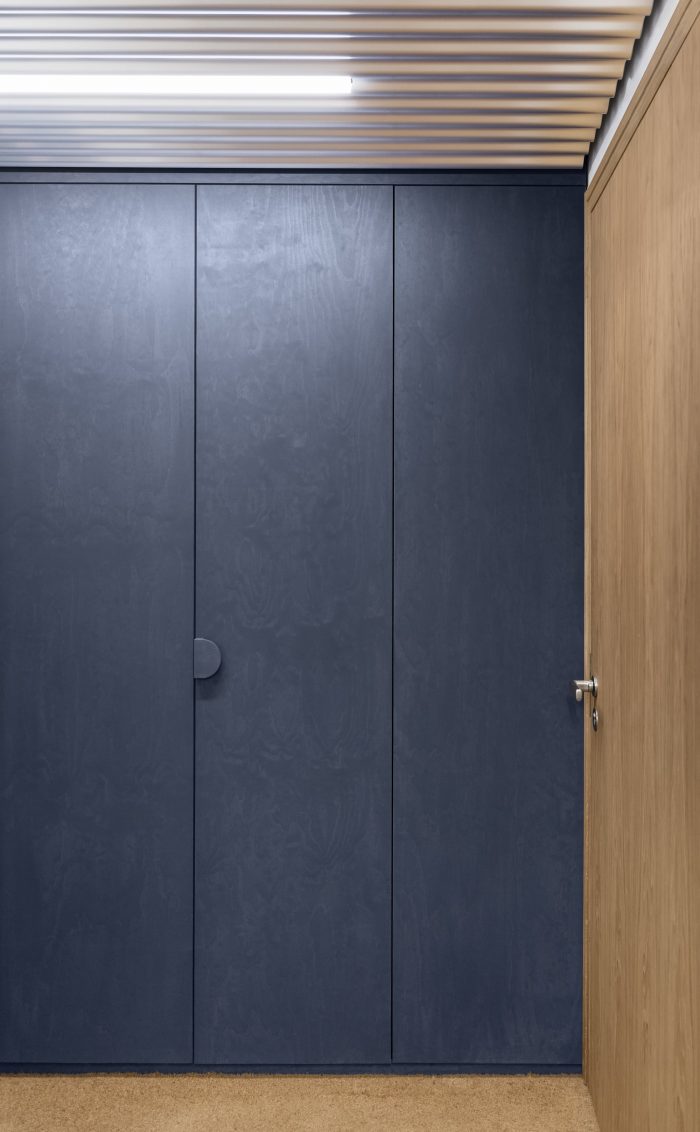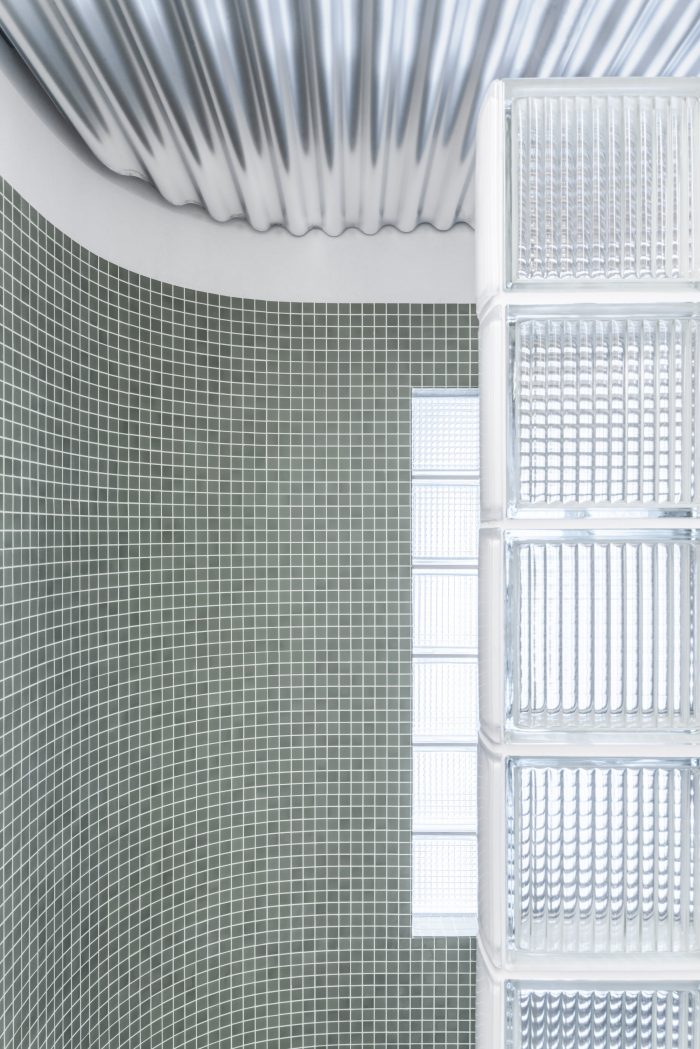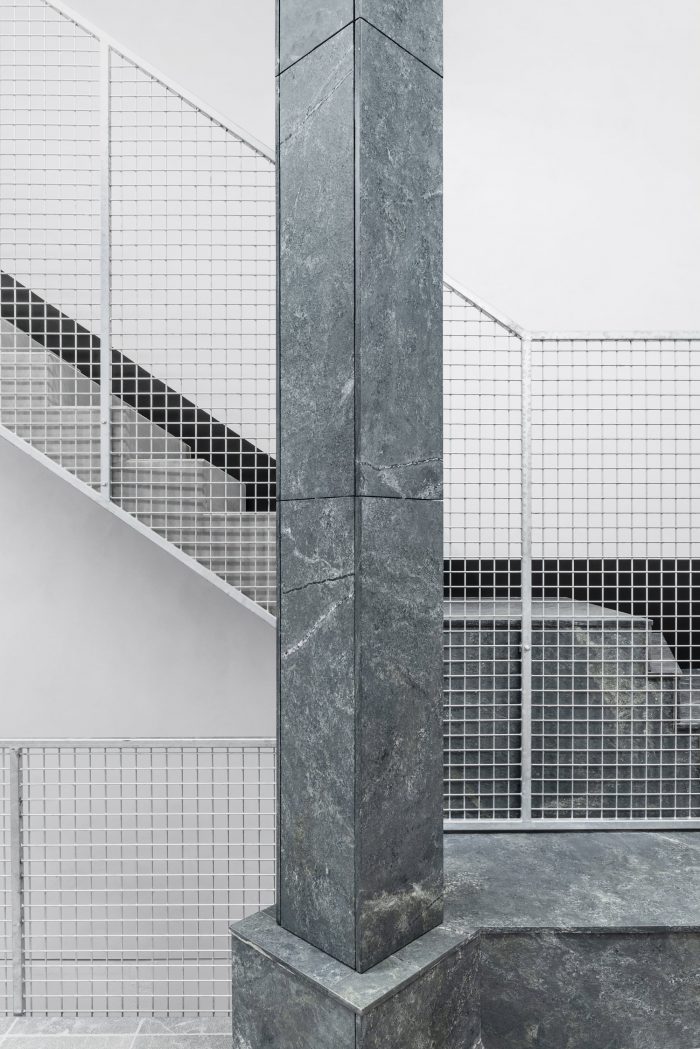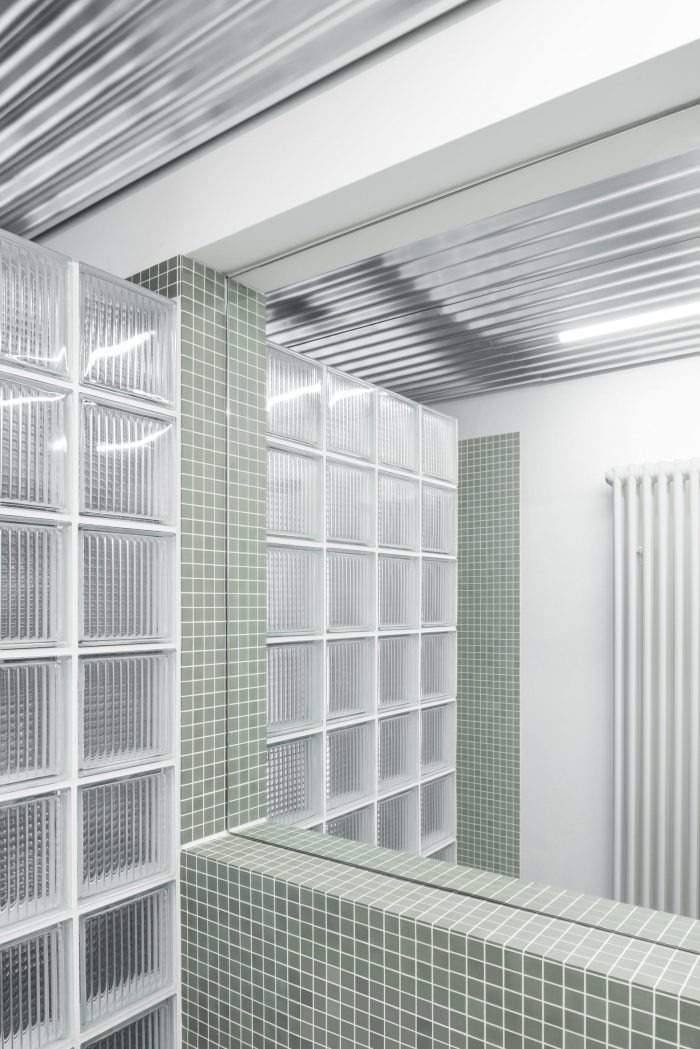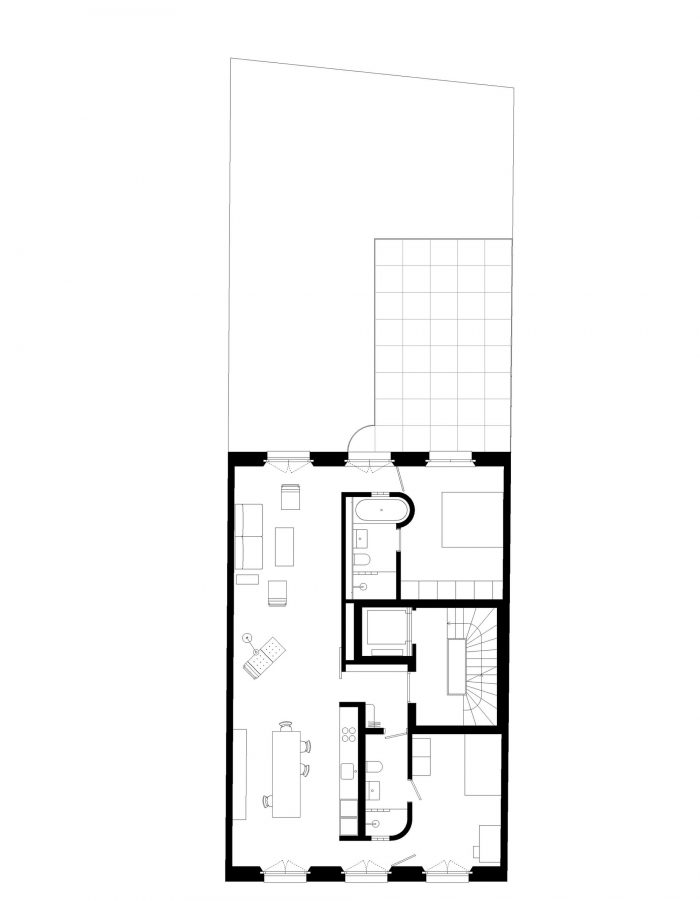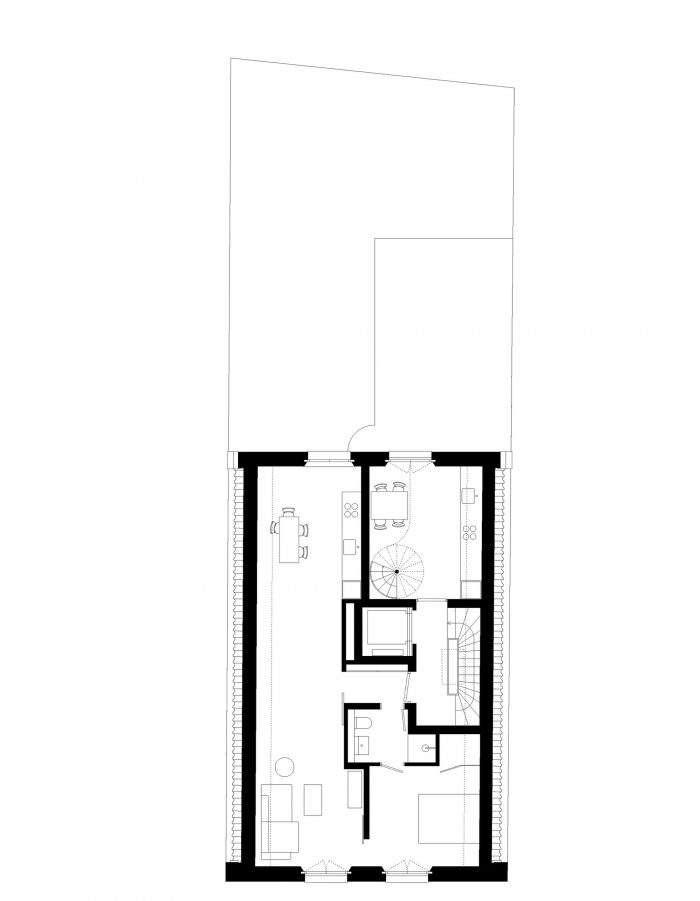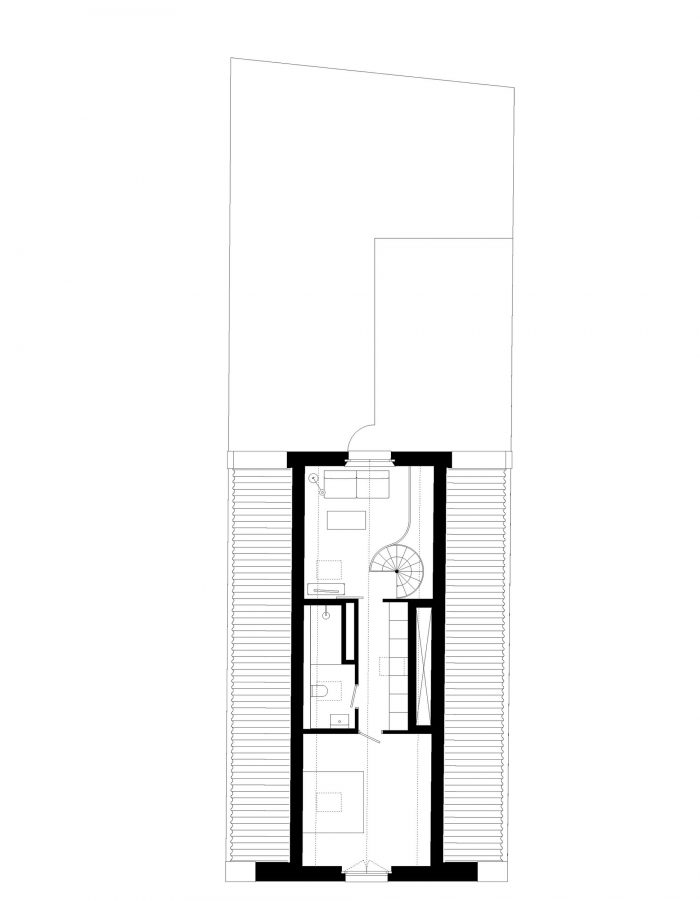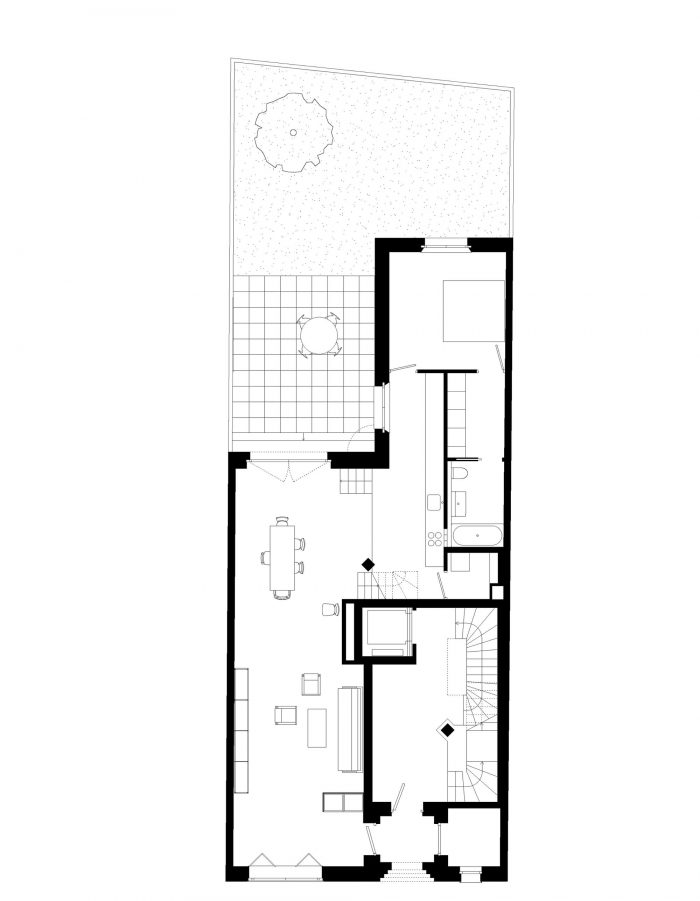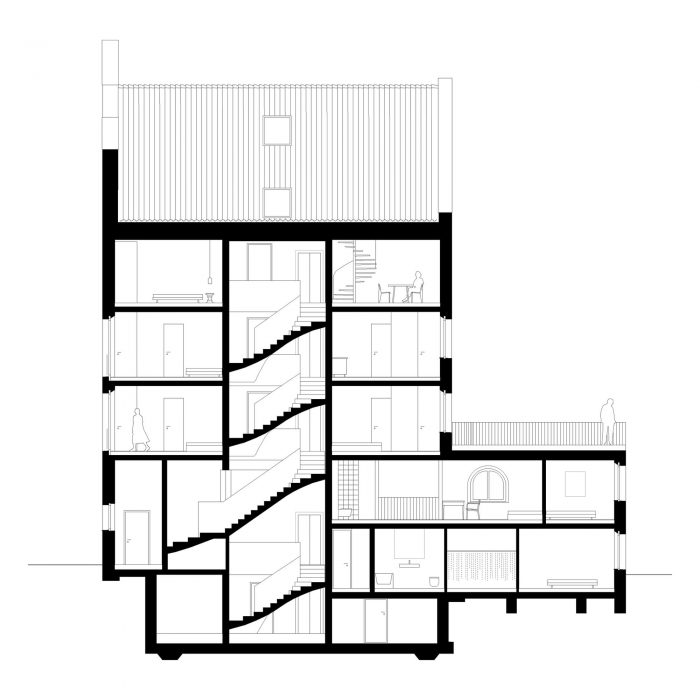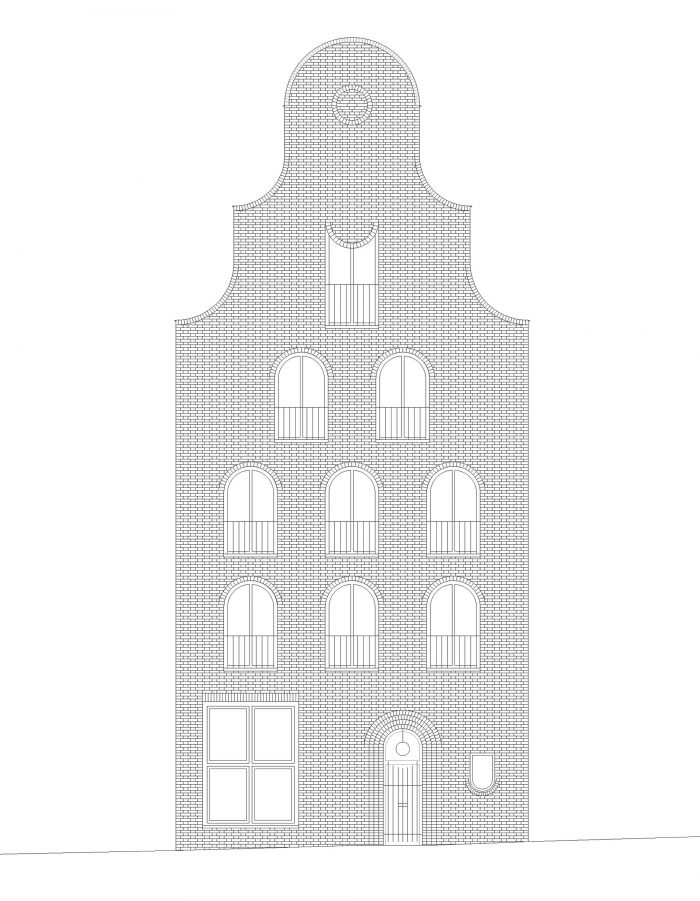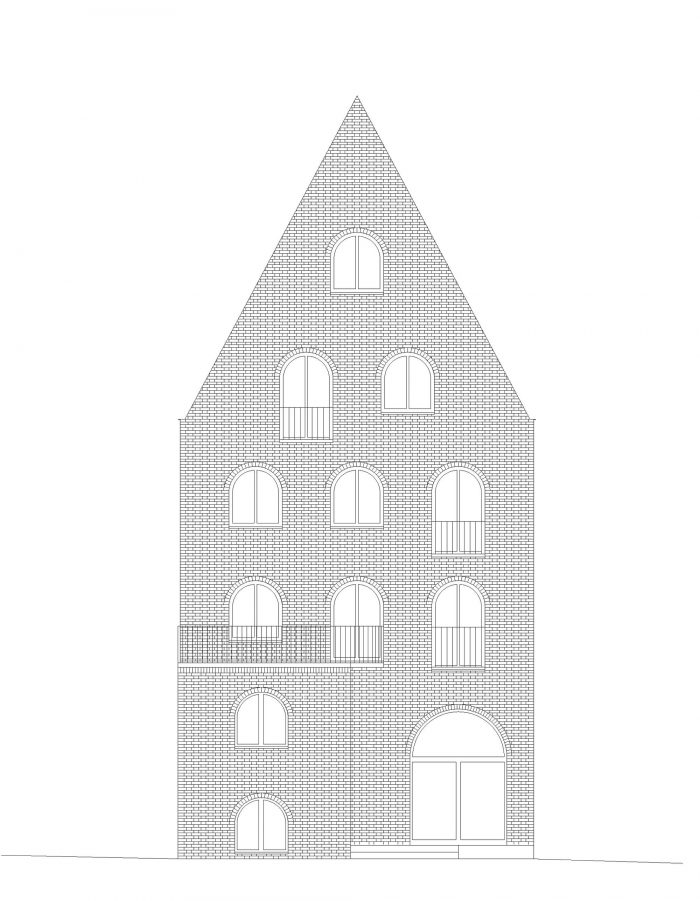在最古老的商人区,也就是吕贝克的创始区的原址上,在二战中被严重毁坏,在原有的地块上以独立的设计建造坡屋顶的联排别墅。他们的密度和混合使用是基于历史模式。
On the site of the oldest merchants’ quarter, Lübeck’s founding quarter, which was heavily destroyed in World War II, gabled townhouses are being built in a self-contained design on the original plots of land. Their density and mixed-use are based on historical models.
考察商人的房子,一个典型的吕贝克开发项目,以及在联合国教科文组织世界遗产地吕贝克汉萨城的核心区域的建筑要求,是我们研究的核心重点。位于Fischstraße 18的住宅楼采用了历史性的平面结构,并使其可用于城市的现代生活。
The examination of the merchant’s house, a typical Lübeck development, and the requirements for building in the core area of the UNESCO World Heritage Site of the Hanseatic City of Lübeck were a core focus of our study. The residential building at Fischstraße 18 takes up historic floor plan structures and makes them usable for contemporary living in the city.
双层的第一层是典型的商人住宅,以及在尖顶空间的平面图的缩小。十四米的建筑深度允许非常具体的平面设计,有过高的房间,画廊的情况,以及从立面延伸到立面的生活空间。
The double-story first floor is typical of merchant houses, as well as the narrowing of the floor plan in the pointed roof space. A building depth of fourteen meters allows for very specific floor plan designs with over-height rooms, gallery situations, and living spaces extending from façade to façade.
其结果是在五个不同的、独立的公寓中形成了高密度的空间状况。
The result is a high density of spatial situations in five different, individual apartments.
Architects: Henrik Becker
Year : 2021
Photographs :Hannes Heitmüller
Lead Architects : Hagen Schmidt, Fabian Reimer
Structural Engineer : Hamann + Stange
Building Contractor : Ralf Käcker Bauunternehmung GmbH
Roofing Contractor : Zimmerei Carl-August Hoffmann
Electrician : Elektro Stasch GmbH
Window Manufacturer : Tischlerei Seltz
City : Lübeck
Country : Germany

